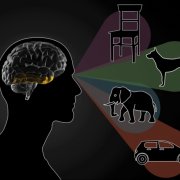Study shows that a brain region called the inferotemporal cortex is key to differentiating bears from chairs.
Anne Trafton | MIT News Office
As visual information flows into the brain through the retina, the visual cortex transforms the sensory input into coherent perceptions. Neuroscientists have long hypothesized that a part of the visual cortex called the inferotemporal (IT) cortex is necessary for the key task of recognizing individual objects, but the evidence has been inconclusive.
In a new study, MIT neuroscientists have found clear evidence that the IT cortex is indeed required for object recognition; they also found that subsets of this region are responsible for distinguishing different objects.
In addition, the researchers have developed computational models that describe how these neurons transform visual input into a mental representation of an object. They hope such models will eventually help guide the development of brain-machine interfaces (BMIs) that could be used for applications such as generating images in the mind of a blind person.
“We don’t know if that will be possible yet, but this is a step on the pathway toward those kinds of applications that we’re thinking about,” says James DiCarlo, the head of MIT’s Department of Brain and Cognitive Sciences, a member of the McGovern Institute for Brain Research, and the senior author of the new study.
Rishi Rajalingham, a postdoc at the McGovern Institute, is the lead author of the paper, which appears in the March 13 issue of Neuron...
Read the full article on the MIT News website using hthe link below.

